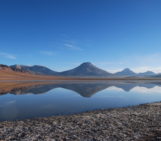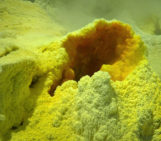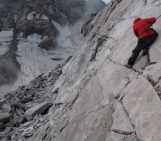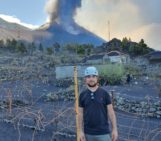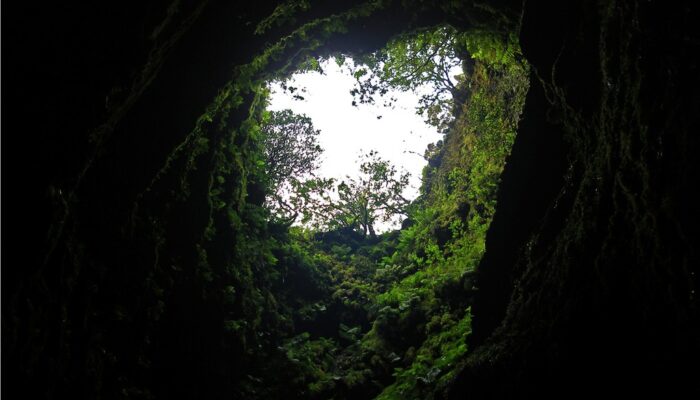
It’s not every day that you can peer into a volcano, much less gaze out at the sky from the inside of one. The Algar do Carvão, or “the Cavern of Coal,” is one of the few places on Earth where you can explore the underground reaches of a volcanic site.
The volcanic pit is found on the island of Terceira, part of the Azores archipelago. This collection of islands is an autonomous region of Portugal, located in the Atlantic Ocean about 1800 kilometres west from the Portuguese mainland. The archipelago is an especially volcanic hotspot, situated on the border of three major tectonic plates: the North American, Eurasian and African Plates.
The Algar do Carvão is essentially an ancient lava tube, made up of a volcanic chimney, about 80-90 metres deep, which then opens up into secondary magma chambers. The chimney formed first roughly 3,200 years ago, in the wake of a volcanic eruption. Then a second eruption, occurring in the same spot 1,200 years later, created many of the magma chambers seen today.
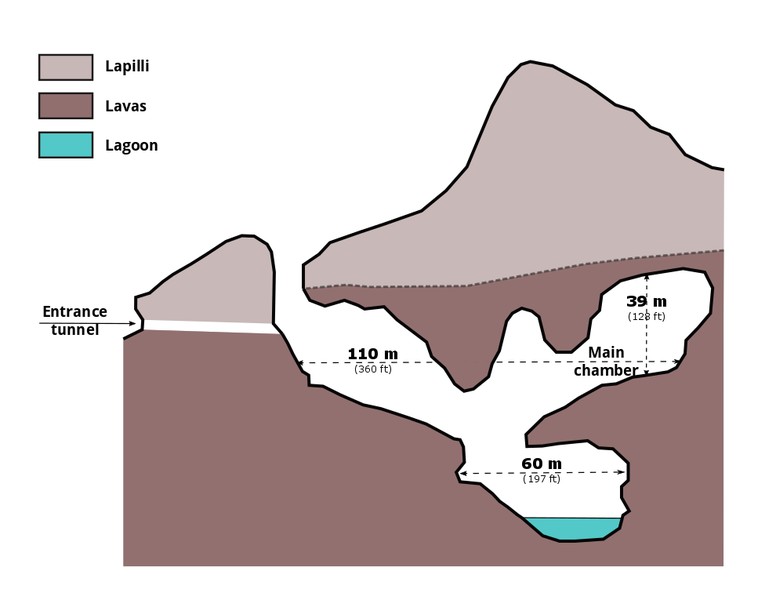
A profile of the Algar do Carvão, based on a similar cutaway produced by “Os Montanheiros,” (Credit: Ruben JC Furtado / Wikimedia Commons)
Despite what the cavern’s title suggests, the volcanic site is not a source of coal, but rather named for the walls’ dark black, ‘sooty’ colour. The volcanic pit is actually better known by geologists and cave enthusiasts for its source of silica-rich stalagmites and stalactites, a feature not commonly found in this region. Scientists have hypothesized that the structures’ silicate composition could have come in part from the volcano’s past hydrothermal activity or its population of diatoms, microorganisms which contain silica in their cell walls.
As you can see from the lush flora featured in today’s photo, the Algar do Carvão is teeming with life. Vegetation blankets the mouth of the cone structure and many animal populations thrive in the cavern environment. The volcanic pit is also home to several species found only on the Azores islands, like the troglobian spider Turinyphia cavernicola and the Terceira Island scarab Trechus terceiranus.
References
Daza, D. et al.: Isotopic composition (δ¹⁸ O y δD) of silica speleothems of the Algar do Carvão and Branca Opala volcanic caves (Terceira Island, Azores, Portugal), Estudios Geológicos, 70, 2, 2014.
Borges, P. A. V., Carlos Crespo, L., Cardoso, P.: Species conservation profile of the cave spider Turinyphia cavernicola (Araneae, Linyphiidae) from Terceira Island, Azores, Portugal, Biodiversity Data Journal 4: e10274, 2016.
Nunes, J.C., J.P. Constância, M.P. Costa, P. Barcelos, P.A.V. Borges & F. Pereira: Route of Azores Islands Volcanic Caves. Associação Os Montanheiros & GESPEA (Ed.). 16, 2011.
Algar do Carvão, Associação Os Montanheiros
Natural Monument of Algar do Carvão, 2011 Regional Secretariat for Agriculture and Environment, Governo dos Açores
Imaggeo is the EGU’s online open access geosciences image repository. All geoscientists (and others) can submit their photographs and videos to this repository and, since it is open access, these images can be used for free by scientists for their presentations or publications, by educators and the general public, and some images can even be used freely for commercial purposes. Photographers also retain full rights of use, as Imaggeo images are licensed and distributed by the EGU under a Creative Commons licence. Submit your photos at http://imaggeo.egu.eu/upload/.

